The Vikings were known for their exceptional skills in crafting various types of instruments. These instruments were used in a variety of ways, from entertainment to religious rituals.
And archaeological finds have shown us clearly that the Vikings had a wide variety of instruments at their disposal, including mostly bone or wooden wind instruments.
Some of the most popular Viking instruments include woodwind instruments such as horns, flutes, panpipes, skalmejen, and jaws harps. The Vikings also played stringed instruments like the lyre and the harp.
The instruments were often used in combination to create a unique sound – a Viking orchestra, if you will – that was both soothing and mesmerizing.
Despite the Viking Age coming to an end centuries ago, the music and instruments of the Vikings continue to fascinate people today. In this article, I’ll explore the various types of Viking instruments, their history, and their significance in Viking culture.
I’ll also examine how these instruments were made, how they were used, and the role they played in Viking society.
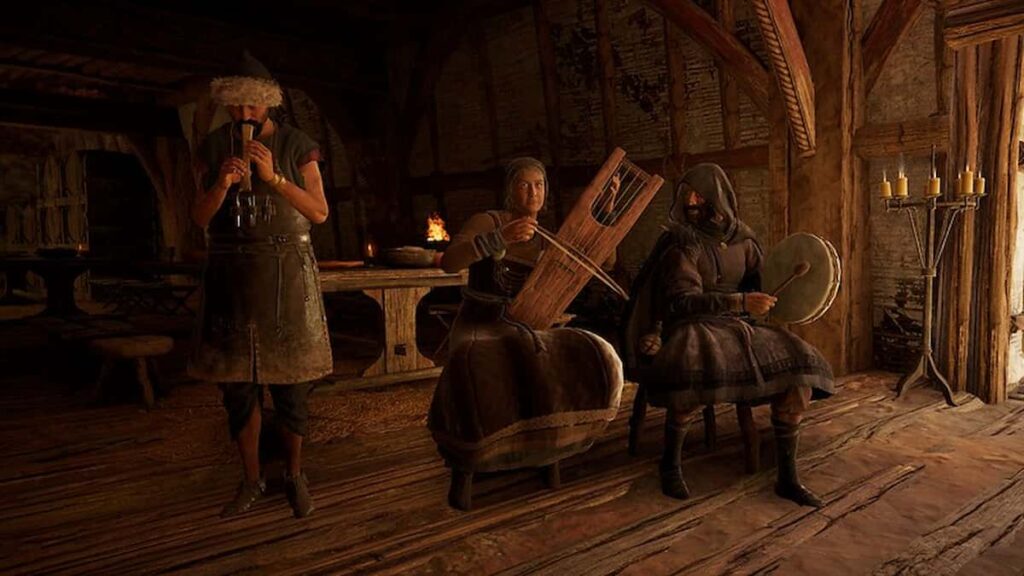
Table of Contents
Viking Instruments
Lyre
The lyre was a popular instrument among the Vikings and was considered a gentleman’s instrument.
It was similar to a harp and was played by plucking the strings. The lyre was often used to accompany singing and was a popular instrument for storytelling.
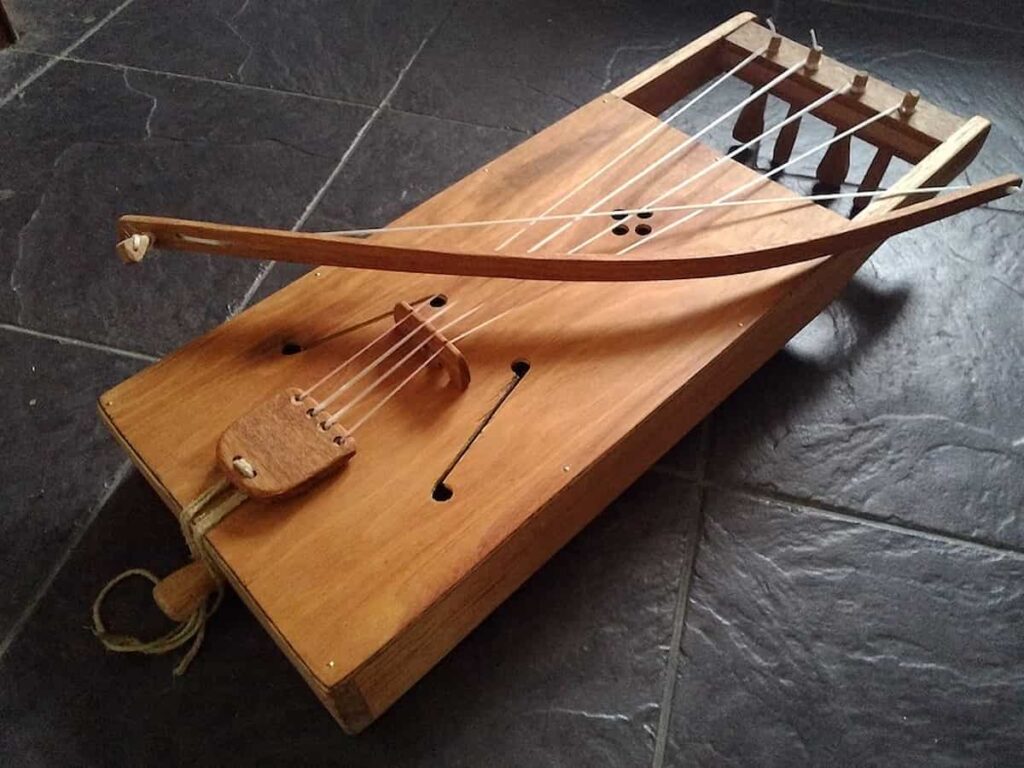
Bone Flute
The bone flute was a simple instrument made from the bones of animals such as birds or cows. The Vikings would hollow out the bones, leaving a small hole at one end for blowing and several holes along the length of the bone for fingering.
This was a popular instrument for solo performances and was often used to accompany singing, including at Viking weddings.
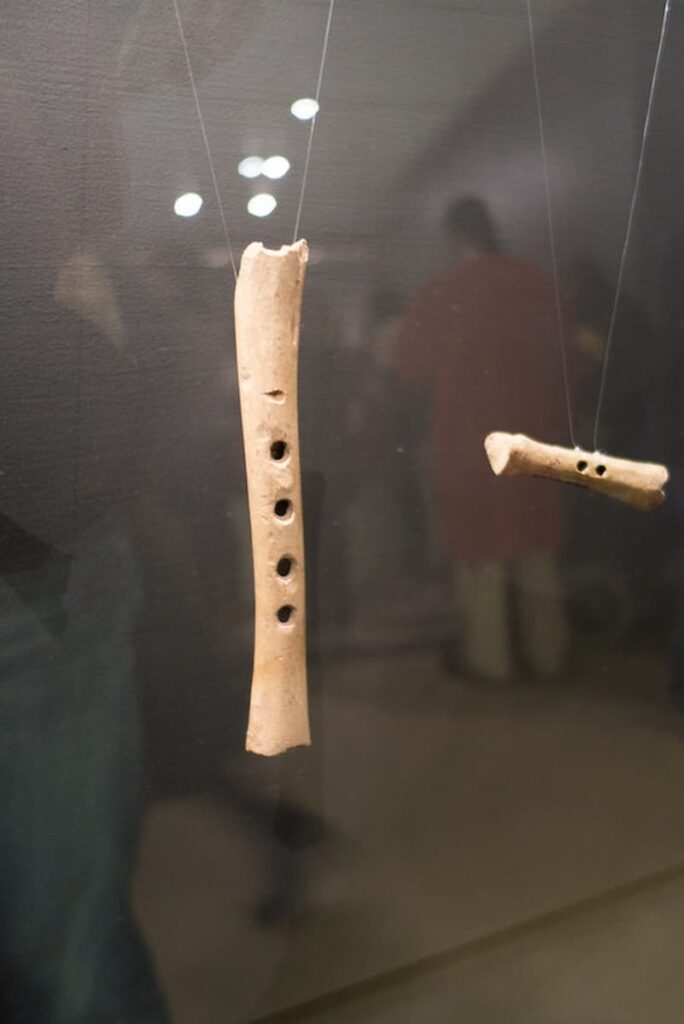
Horn
The horn was a versatile instrument that could be used for both music and signaling. The Vikings would often use animal horns, such as those from cows or goats, and would hollow them out to create an instrument.
It was played by blowing into the small end and was often used to signal the start of battles or to announce the arrival of important guests.
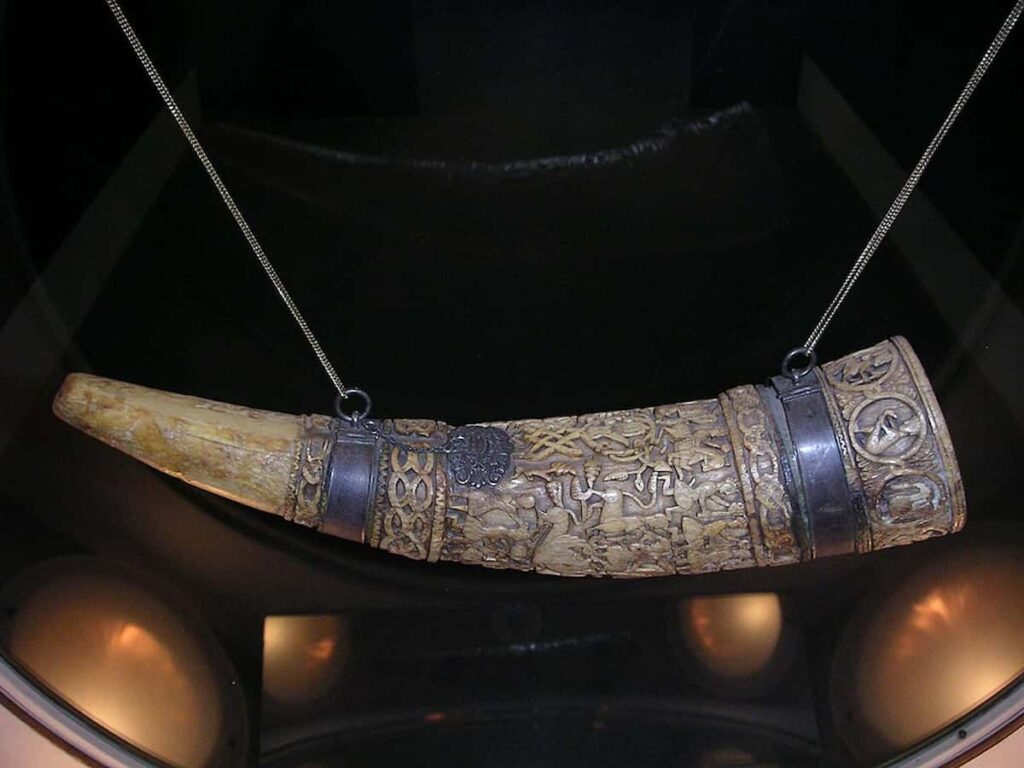
Drum
The drum was a popular instrument among the Vikings and was used in many different settings, from religious ceremonies to battles. The Vikings would often use animal skins, such as those from cows or goats, to create the drumhead.
It was played by striking the drumhead with a stick or the hand and was often used to keep time for singing or dancing.
The Vikings had a deep appreciation for music and used it in many different aspects of their lives. Whether it was for storytelling, religious ceremonies, or battles, music played an important role in Viking culture.
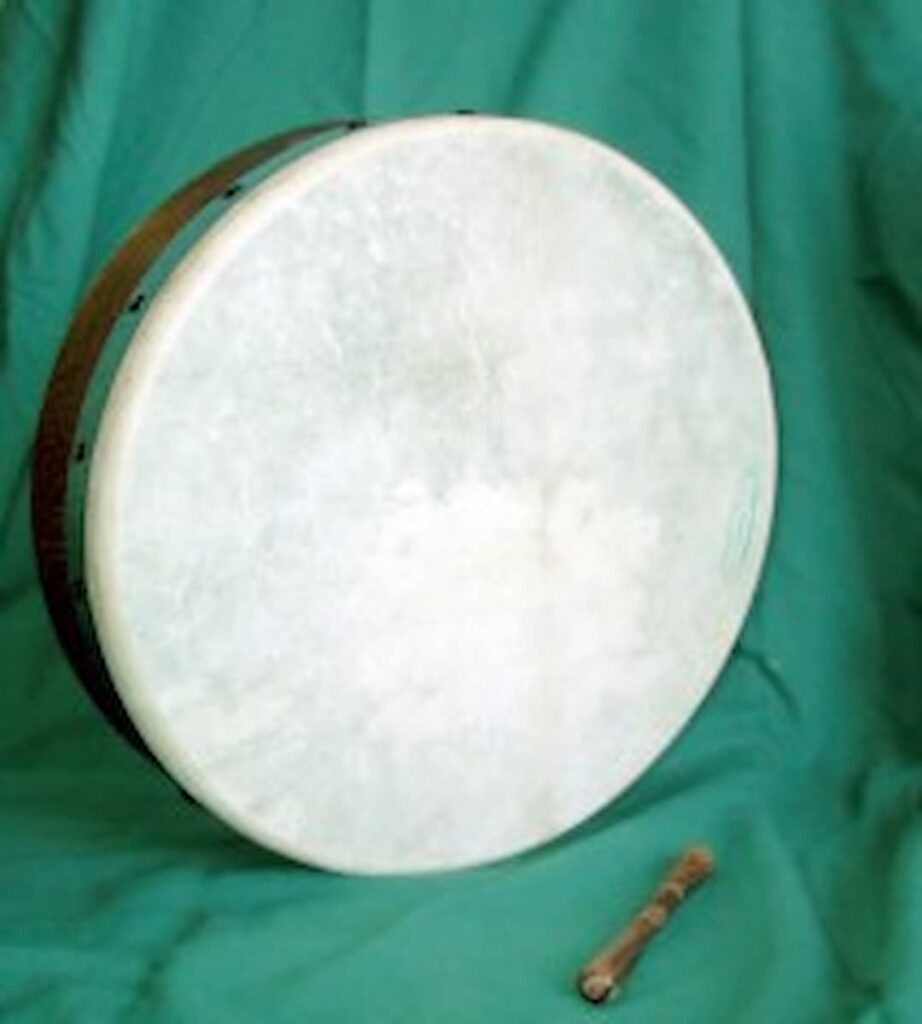
What Was Viking Music Like?
When we think of Viking music, we may imagine loud, boisterous, and aggressive sounds. However, the truth is that Viking music was diverse and varied, just like any other culture’s music. The Vikings used a wide range of instruments to create their music, including woodwind, brass, string, and percussion instruments.
One of the most popular instruments during the Viking Age was the lyre, a stringed instrument that was played by snapping the strings similar to a guitar. The rebec, a violinish-looking instrument, was also commonly used.
Additionally, the Vikings used a variety of percussion instruments, such as drums and rattles, to create rhythmic beats.
Interestingly, some Viking instruments have survived to this day and are still used in modern music. For example, the Jew’s harp, a harp-like instrument found in Viking gravesites, is still played in some folk music today.
While we don’t have any recordings of Viking music, we do have some written accounts that give us an idea of what it may have sounded like. According to some sources, Viking music was often accompanied by singing or chanting, and was used in a variety of settings, from religious ceremonies to social gatherings.
Overall, Viking music was a rich and diverse art form that played an important role in Viking culture. By studying the instruments and music of the Vikings, we can gain a deeper understanding of their way of life and the world they lived in.
You may also be interested in: 19 Most Famous Vikings in History (You Need to Know)
Did any Viking songs survive?
One of the most intriguing questions about Viking music is whether any Viking songs have survived to the present day. Unfortunately, there is no definitive answer to this question. While there are a few examples of Viking musical instruments that have survived to the present day, there is very little evidence of Viking songs that have survived in their original form.
One of the main reasons for this is that Viking songs were typically passed down orally from generation to generation. As a result, they were not written down and preserved in the same way that written documents were.
This means that many Viking songs were lost over time, as they were not recorded in any form that could be preserved for future generations.
Despite this, there are a few examples of Viking songs that have survived in some form. One of the most famous examples is the Icelandic sagas, which contain many examples of Viking poetry and songs.
These sagas were written down in the 13th century, several hundred years after the Viking Age, but they provide valuable insights into the types of songs that Vikings may have sung.
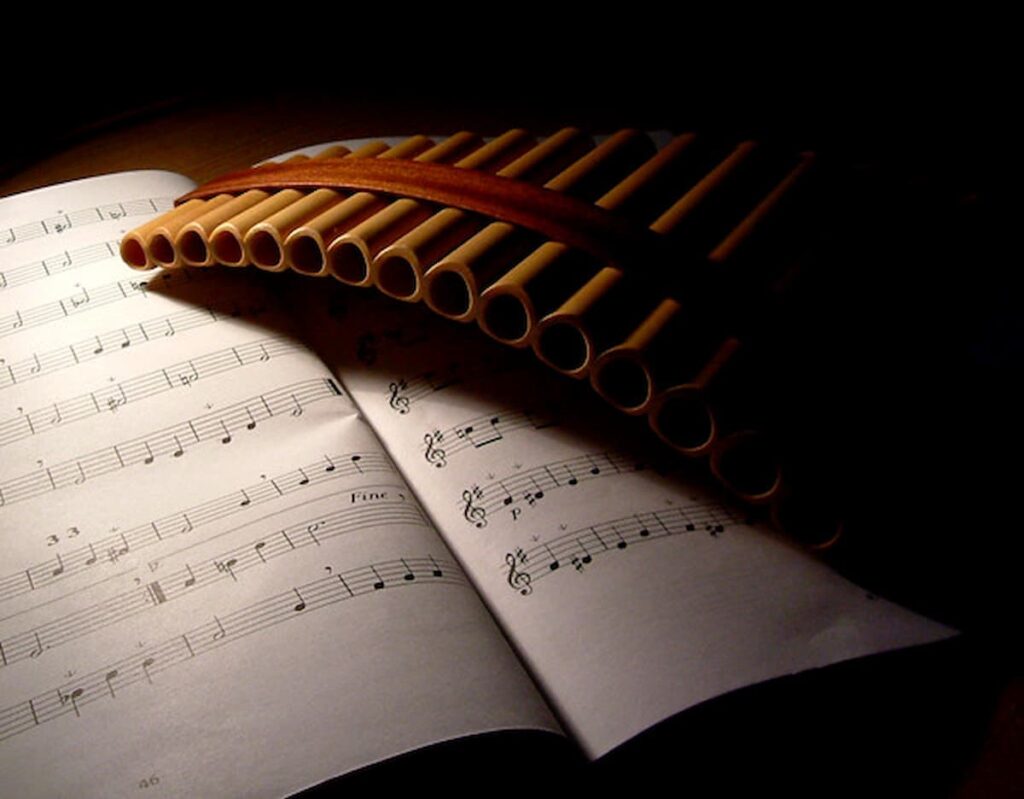
Another example of Viking songs that have survived is the music of the Sami people, who are indigenous to northern Scandinavia. The Sami people have a long tradition of yoik singing, which is a type of singing that is similar to traditional Viking singing.
While it is not clear whether yoik singing is directly descended from Viking singing, it does provide some insights into the types of songs that Vikings may have sung.
What is the three string Viking instrument?
One of the most iconic instruments from the Viking age is the three-stringed lyre. This instrument was widely used by Viking musicians and was an integral part of their music and culture. The lyre consists of a broad wooden soundbox connected to a special crosspiece that holds the strings.
The number of strings can vary from seven to 12, but the three-stringed lyre is the most commonly known and used.
The three-stringed lyre is a plucked string instrument that produces a rich, warm sound. It was often played by skilled musicians who would accompany singers or recite epic poems.
The lyre was also used in rituals and ceremonies, and it was believed to have magical powers that could ward off evil spirits and bring good luck.
The three strings of the lyre were traditionally made of gut, although horsehair or silk were also used. The strings were tuned to a range of notes, allowing the musician to play a variety of melodies and harmonies.
This Viking instrument was often decorated with intricate carvings and ornate designs, reflecting the importance of music in Viking culture.
Find out more about: Where Did Vikings Come From? (Origins, Migration and More)
Did Vikings Play the Jaw Harp?
Yes, it is believed that Vikings played the jaw harp, also known as a mouth harp or Jew’s harp. This instrument is one of the most ancient musical instruments and has been known in most European and Asian countries for over 3000 years. Those discovered in Scandinavia date mostly from the 13th century.
The jaw harp is a small, simple instrument consisting of a flexible metal or bamboo tongue attached to a frame. The player holds the frame against their teeth or lips and plucks the tongue to create a twangy sound.
The pitch can be changed by altering the size of the player’s mouth cavity or by using the tongue to press on the frame.
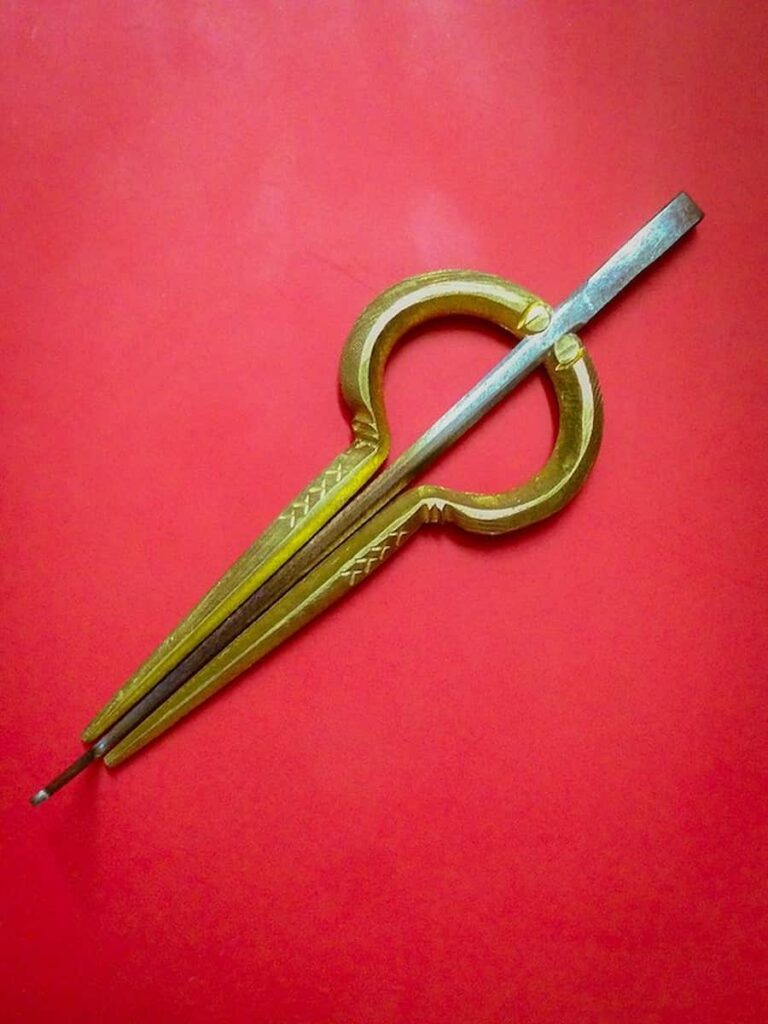
While the jaw harp was likely not as popular as other Viking instruments such as the lyre, it was likely used for entertainment and possibly even in religious ceremonies. Some jaw harps have been found in Viking gravesites, indicating that they held some cultural significance.
It’s worth noting that the jaw harp was not unique to Viking culture and was played in many other cultures throughout history. However, its use in Viking culture adds to the rich and diverse musical traditions of this fascinating civilization.
Is the Viking Lyre a Harp?
When it comes to Viking instruments, there is often confusion between the lyre and the harp. While these two instruments share similarities, they are not the same. The lyre is a stringed instrument with strings that are parallel to the soundboard. It is often referred to as a handheld harp because it is small and easy to carry around.
The Viking lyre was typically made from wood and had six strings made from sheep guts. It was a popular instrument among the Viking elite and was often played at feasts and gatherings.
On the other hand, a harp is a larger instrument with strings that are perpendicular to the soundboard. It is played by plucking the strings with the fingers.
The harp was not as common in Viking culture as the lyre, but there is evidence that it was used by some Vikings.
So, while the Viking lyre may resemble a harp, it is not technically a harp. It is its own unique instrument with its own distinct sound and history.
Also check out this article: 19 Most Famous Vikings in History (You Need to Know)
Did Vikings Have Flutes?
As it turns out, Vikings did have flutes! In fact, there is plenty of evidence suggesting that flutes were a popular instrument among the Vikings. Archaeologists have found flutes made of wood, bone, and even ivory in Viking gravesites. These flutes come in various shapes and sizes, ranging from simple whistles to more complex instruments with multiple pipes.
Some of the flutes found in Viking gravesites have even been decorated with intricate carvings and designs.
It’s important to note that not all of the flutes found in Viking gravesites were necessarily used for music. Some of them may have been used for other purposes, such as signaling or communication.
However, the fact that so many flutes have been found in Viking gravesites suggests that they were an important part of Viking culture.
One interesting thing to note is that some of the flutes found in Viking gravesites are similar in design to other instruments found in other parts of the world. For example, some of the bone flutes found in Viking gravesites are similar in design to flutes found in Central Asia and the Middle East.
This suggests that Vikings may have had contact with other cultures and may have been influenced by their music and instruments.
Did Vikings Play Guitar?
When we think of the Vikings, we often picture them wielding swords and axes, but did they also play guitar? The answer is no, the guitar as we know it did not exist during the Viking era. However, the Vikings did have stringed instruments that were similar to the guitar. One of these instruments was the lyre, which was a popular instrument in Viking culture.
The lyre was a small harp-like instrument that was played by plucking the strings. It had a sound hole in the body and was often decorated with intricate carvings. The instrument was made from wood and had between five and nine strings.
Another stringed instrument that was similar to the guitar was the rebec. The rebec was a bowed instrument that had a pear-shaped body and a long, thin neck.
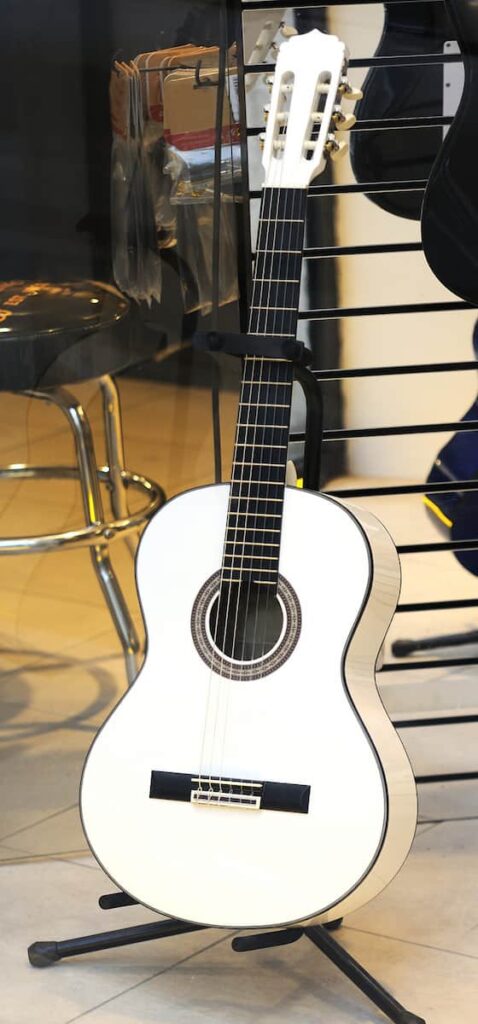
While the jaw harp was likely not as popular as other Viking instruments such as the lyre, it was likely used for entertainment and possibly even in religious ceremonies. Some jaw harps have been found in Viking gravesites, indicating that they held some cultural significance.
It’s worth noting that the jaw harp was not unique to Viking culture and was played in many other cultures throughout history. However, its use in Viking culture adds to the rich and diverse musical traditions of this fascinating civilization.
Did the Vikings have bagpipes?
As a lover of music and history, I’ve always been fascinated by the question of whether the Vikings had bagpipes. The answer is not entirely clear, but there is some evidence to suggest that they did. One theory is that the Vikings may have taken the bagpipe with them to Scotland during their raids and settlements there.
It’s possible that they then brought them back to Scandinavia, where they were adapted and modified to suit local tastes and styles.
Another theory is that bagpipes were already present in Scandinavia before the Viking Age, and that the Vikings simply adopted and developed them further. This is supported by the fact that similar instruments were used by other cultures in the region, such as the Finnish “mäyränpilli” and the Swedish “säckpipa.”
However, there is no conclusive archaeological evidence to prove either of these theories. The closest thing we have is a set of wooden pipes found in a Viking grave in Sweden, which some experts believe may have been part of a bagpipe-like instrument.
But it’s also possible that they were simply a standalone instrument, or even a toy. So, did the Vikings have bagpipes? The answer is still unclear, but it’s certainly a fascinating question to ponder.
Whether they did or not, the Vikings were undoubtedly skilled musicians who created a wide variety of instruments and styles, many of which are still celebrated and enjoyed today.
Did the Vikings Listen to Music?
As a lover of music myself, I was curious to know whether the Vikings enjoyed listening to music. After some research, I discovered that music was an essential part of Viking culture and played a role in many aspects of their daily lives. From what we know, music was played during religious ceremonies, feasts, and even battle.
It was a way to celebrate victories and mourn losses. The Vikings believed that music had the power to connect them with the gods and the afterlife.
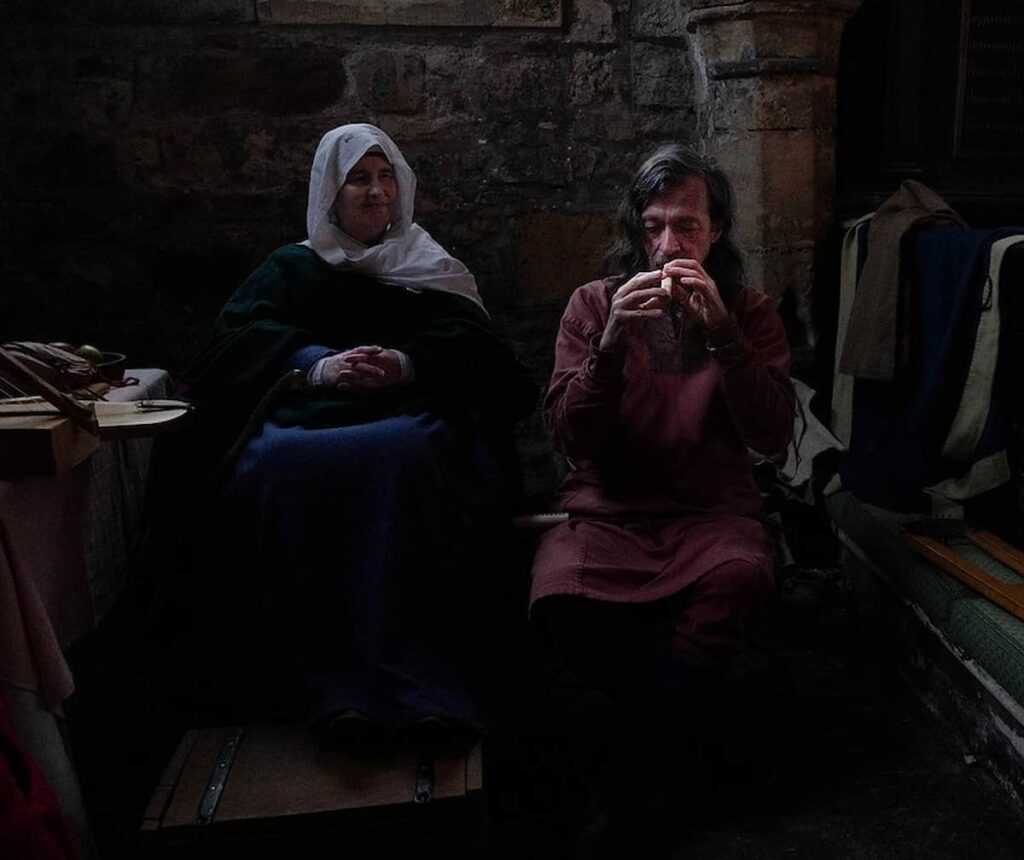
While we don’t know exactly what kind of music the Vikings listened to, we do know that they had a variety of instruments at their disposal. These included string instruments like the lyre, the harp, and the tagelharpa, as well as wind instruments like the flute, the horn, and the panpipe.
It’s also important to note that music was not just for entertainment purposes. It had practical uses as well.
For example, the horn was used to signal during battle, and the flute was used to communicate with others over long distances.
You may also be interested in: Viking Piercings: The Historical Truth
What is the Oldest Viking Music?
When we think of Viking music, we may imagine a group of fierce warriors playing loud and aggressive tunes on their instruments. However, the oldest music from Scandinavia that we know of is quite different from this stereotype.
Unfortunately, we don’t have any music from the Vikings specifically. Instead, the oldest known secular Norse song, believed to have been written in about 1300, is “Drømde mik en drøm i nat” (“I dreamed a dream last night”), which sounds like this:
It was written in runes and the lyrics are as follows, along with one of the main translations of this:
Drømde mik en drøm i nat umsilki ok ærlik pæl
I dreamt a dream last night of silk and fine fur
And if it sounds familiar, you may have heard it sung in an episode of Vikings!
While that may not be entirely historically accurate, given that the Vikings had started to wane by the time this song was written, there’s every chance it at least has similarities to Viking music from only a few centuries earlier.
